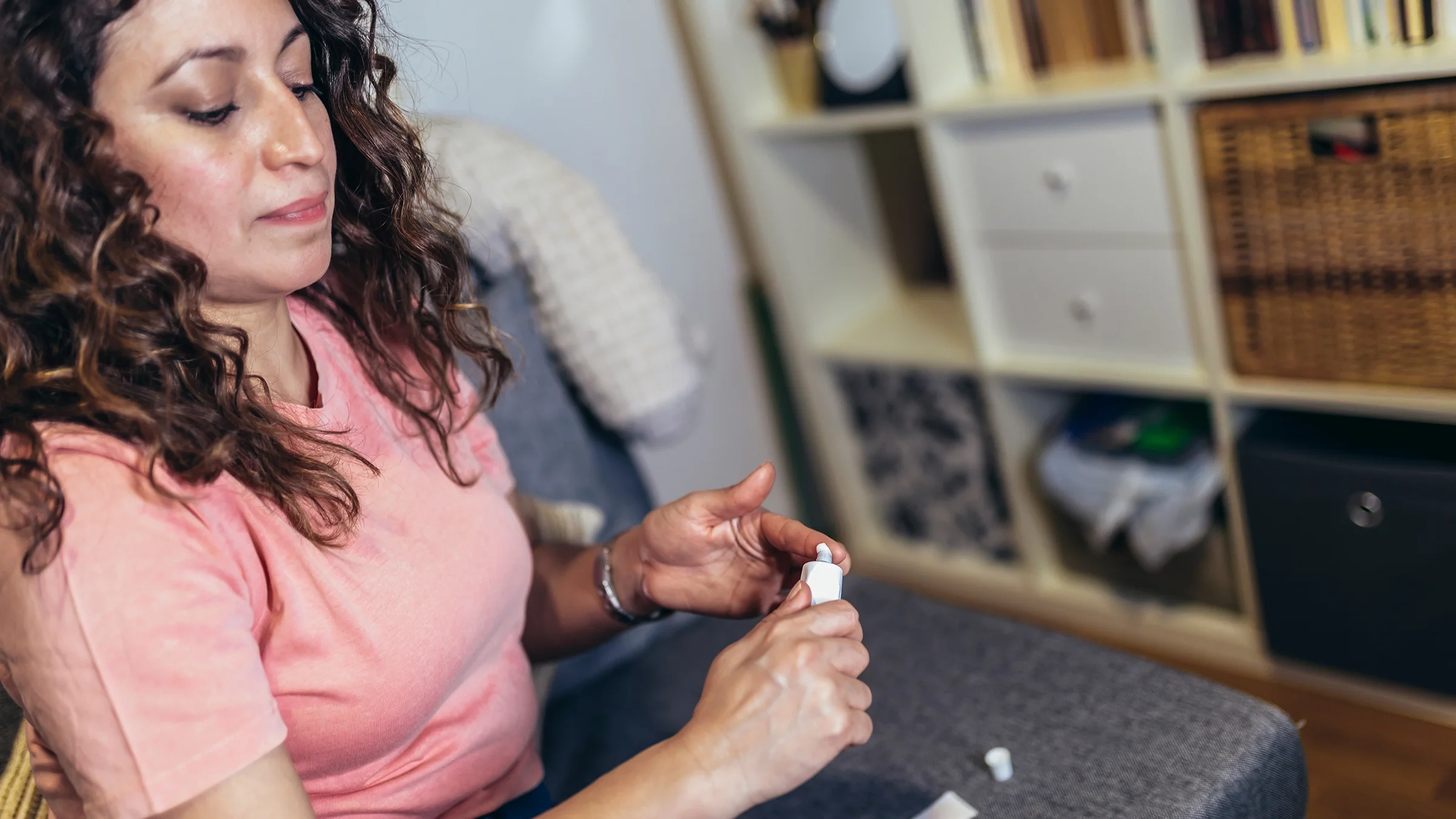Key takeaways:
Prurigo nodularis (PN) is a skin condition that doesn’t have a cure. Thankfully, many treatments are available to lessen and relieve PN’s main symptoms: skin nodules and persistent itching.
Two FDA-approved treatments for PN are Dupixent (dupilumab) and Nemluvio (nemolizumab). Many other medications may be prescribed off-label to relieve symptoms, including topical steroids, vitamin D analogs, and antidepressants.
Cryosurgery and phototherapy are non-medication options that may be helpful for PN in more severe cases. These treatments are given by a healthcare professional.
Your skin is a foundational part of your body that covers you and protects you. So, when something goes wrong with your skin, it can disrupt your health and peace of mind. It is your largest organ after all.
Many skin conditions can lead to these types of disruptions. One such condition is prurigo nodularis (PN), which causes bumps on the skin. These bumps, or nodules, are hard, itchy, and may bleed when scratched intensely.
There’s no cure for prurigo nodularis. Instead, the goal of PN treatment is to break the itch-scratch cycle. This allows the skin to heal. Some PN treatments target skin nodules, while others help lessen pesky itching symptoms.
Read on to learn about 10 available PN treatments that you and a dermatologist may consider.
1. Dupixent
Dupixent (dupilumab) is a biologic medication that’s FDA approved to treat several health conditions, including adults with PN. Dupixent works by blocking the production of certain proteins — called interleukins — that lead to inflammation in the body. This helps treat the underlying symptoms of PN over time.
Dupixent comes as a prefilled pen or syringe. It’s administered by injecting the medication underneath the skin. The shot can be given in the belly, thighs, or the back of the upper arm.
When prescribed for PN, Dupixent is initially administered as a 600 mg dose. You can then give yourself a 300 mg dose every other week.
2. Nemluvio
Nemluvio (nemolizumab) is a biologic medication that’s specifically approved to treat adults with PN. It works by blocking interleukins that cause inflammation, but they’re different from those blocked by Dupixent. This ultimately reduces inflammation in your body and helps lessen the symptoms of PN.
Nemluvio comes as a powder in a prefilled injection pen. Before injecting a dose, the powder is mixed with water in the pen. You can then self-inject the medication under the skin. The shot can be given in the belly, thighs, or the back of the upper arm.
Got the itch for knowledge? Learn about common causes of itchy skin.
Out with the old: If you’re taking a newer medication, it might be a biologic. Discover the differences between biologics and small molecule drugs.
Topical steroid potencies: Topical steroids are useful for many conditions, but they aren’t all the same. Understand the differences between each type and how they’re classified.
The best Nemluvio dosage depends on your body weight. Most people generally start off by injecting 60 mg for their first dose. Subsequent doses are then given every 4 weeks. If you weigh less than 90 kg (198 lbs), the recommended maintenance dose is 30 mg. If you weigh more than 90 kg, the recommended dose is 60 mg.
3. Topical steroids
Topical steroids (corticosteroids) are go-to treatments for PN, albeit they’re prescribed off-label for this use. These medications relieve inflammation and itching in the areas where they’re applied.
You’ll likely be prescribed a high-potency steroid, such as clobetasol (Impoyz), for PN. Clobetasol is applied to the affected skin once daily, often at night, for up to 2 to 4 weeks at a time. After spreading the cream or ointment on your skin, it’s recommended to wrap the affected area with bandages. This helps keep the medicine in place and prevents you from inadvertently itching in your sleep.
Read more like this
Explore these related articles, suggested for readers like you.
4. Vitamin D analogues
Vitamin D-based medications — also known as vitamin D analogues — are sometimes recommended for the off-label treatment of PN.
In one study, a version of vitamin D called calcipotriene (Dovonex, Sorilux) was shown to relieve itching in people living with PN. It was also effective in reducing the size and quantity of nodules. Another version of vitamin D, called calcitriol (Vectical) ointment, has also been studied for itch relief. Both were applied topically to skin nodules 2 times per day for 8 weeks.
Topical vitamin D analogues are typically used to treat a skin condition called plaque psoriasis. How they work for PN isn’t entirely clear. But using them in this manner is generally considered safe.
5. Topical calcineurin inhibitors
Topical calcineurin inhibitors are applied directly to the skin to reduce certain types of inflammation. Tacrolimus (Protopic) and pimecrolimus (Elidel) are two examples. These medications are occasionally prescribed off-label to improve PN symptoms.
In one small clinical study, people with PN received tacrolimus 0.1% or pimecrolimus 1%. The medications were applied to the affected areas of skin twice daily. Most people in the study experienced some relief from itching. But some people had only a small amount of relief — or none at all.
Overall, more research is needed to determine if topical calcineurin inhibitors are an effective treatment for PN.
6. Antidepressants
Antidepressants are best known for their impact on mood. But they can also be prescribed off-label for PN.
There are many kinds of antidepressants. But when it comes to PN, there are two kinds that have shown promising results: tricyclic antidepressants and selective serotonin reuptake inhibitors (SSRIs). Tricyclic antidepressants include medications such as doxepin (Silenor) and amitriptyline. SSRIs include medications such as paroxetine (Paxil) and fluvoxamine (Luvox).
In clinical studies, treatment with antidepressants improved nodules and itching for many people with PN. However, more research is needed to confirm which antidepressants work best for which types of skin conditions.
7. Methotrexate
Methotrexate (Otrexup, Rasuvo, Trexall) is a versatile medication that’s used to treat an overactive immune response. It can be taken by mouth or injected under the skin. It’s FDA approved for many uses, but taking it for PN is considered off-label.
When people take methotrexate for PN, it can help relieve itching and reduce nodule size. The starting dose for PN is usually 7.5 mg by mouth per week, which can slowly increase every week as needed until your symptoms improve.
Methotrexate is usually reserved for PN cases that are resistant to other types of treatment. This is because of the risk of serious side effects, such as liver or kidney injury.
8. Thalidomide and lenalidomide
Thalidomide (Thalomid) is another medication that may be beneficial as an off-label treatment for PN.
In one study, thalidomide capsules reduced the number of PN lesions among people who had minimal success with other treatments. Study participants received up to 100 mg of thalidomide per day. Most saw their symptoms improve, but almost 60% of people in the study experienced some degree of nerve damage as a side effect.
Lenalidomide (Revlimid) is a more potent form of thalidomide. It hasn’t been studied as closely as thalidomide for PN, but it has shown some benefit. In most cases, these treatments are only considered if no others are effective.
9. Gabapentin and pregabalin
Gabapentin (Neurontin, Gralise) and pregabalin (Lyrica) have also been studied as off-label PN treatments. They may lessen itching. They do this by mimicking a natural body chemical called GABA (gamma-aminobutyric acid). This molecule can slow down certain processes in the body, including skin inflammation and itching.
Gabapentin prescriptions usually start at 100 mg per day and pregabalin at 75 mg. Both are taken by mouth. The recommended dose of either one may increase over time until you experience the intended effect.
10. OTC medications for symptom relief
All of the medications above are available with a prescription from a healthcare professional. In some cases, though, you may benefit from one or more over-the-counter (OTC) medications.
Antihistamines like fexofenadine (Allegra) are one option. They can play a role in preventing itching. Other OTC anti-itch medications to consider include topical products such as:
Calamine
Camphor
Menthol
Capsaicin
These products can reduce itching and make it less likely that you scratch yourself and make your condition worse. They’re generally meant for temporary use, though.
Remember: When it comes to PN, treatment is often complicated. It’s best to get advice from your healthcare professional. Together you can work out treatment options that fit your needs and lifestyle. They may include incorporating prescription and OTC medications to help you relieve your symptoms.
Can cryosurgery or phototherapy treat prurigo nodularis?
Cryosurgery and phototherapy can help treat PN too. Both of these treatments are typically saved for severe or resistant cases.
Cryosurgery involves applying a very cold chemical, such as liquid nitrogen, to the affected areas of skin. This removes the nodule and relieves itchiness in the treated area. Cryosurgery treatment is done in a clinic by a healthcare professional; you may need 2 to 4 treatments to see results. Cryosurgery may not be a good option for people with darker skin tones because it can cause noticeable light patches or scarring.
Phototherapy uses ultraviolet light to reduce itchy nodules. It can also prevent nodules from forming. The treatment is done by a healthcare professional up to 3 times per week for a few weeks (until you see results).
The bottom line
Several medications can treat prurigo nodularis (PN). Dupixent (dupixent) and Nemluvio (nemolizumab) are two FDA-approved options. Off-label treatments, such as topical steroids, vitamin D analogs, and antidepressants, can improve itchiness and skin nodules too. Over-the-counter anti-itch medications, such as calamine lotion, may be helpful for short-term relief. Non-medication treatments like cryosurgery and phototherapy may be helpful in more severe cases.

Why trust our experts?



References
American Osteopathic College of Dermatology. (n.d.). Prurigo nodularis.
Andersen, T. P., et al. (2011). Thalidomide in 42 patients with prurigo nodularis Hyde. Dermatology.
Elmariah, S. B., et al. (2011). Topical therapies for pruritus. Seminars in Cutaneous Medicine and Surgery.
Galderma Laboratories. (2024). Nemluvio- nemolizumab-ilto injection, powder, lyophilized, for solution [package insert].
Kowalski, E. H., et al. (2019). Treatment-resistant prurigo nodularis: Challenges and solutions. Clinical, Cosmetic and Investigational Dermatology.
Labib, A., et al. (2022). Immunotargets and therapy for prurigo nodularis. ImmunoTargets and Therapy.
Lee, J., et al. (2020). Efficacy of pregabalin for the treatment of chronic pruritus of unknown origin, assessed based on electric current perception threshold. Scientific Reports.
Ludmann, P. (2021). Prurigo nodularis: Diagnosis and treatment. American Academy of Dermatology Association.
Ludmann, P. (2021). Prurigo nodularis: Overview. American Academy of Dermatology Association.
Mullins, T. B., et al. (2024). Prurigo nodularis. StatPearls
Sanofi-Aventis U.S. (2024). Dupixent- dupilumab injection, solution [package insert].
Sreekantaswamy, S. A., et al. (2021). Gabapentinoids for pruritus in older adults: A narrative review. Dermatology and Therapy.
Ständer, S., et al. (2006). Treatment of pruritic diseases with topical calcineurin inhibitors. Therapeutics and Clinical Risk Management.
Ständer, S., et al. (2009). Treatment of chronic pruritus with the selective serotonin re-uptake inhibitors paroxetine and fluvoxamine: Results of an open-labelled, two-arm proof-of-concept study. Acta Dermato-Venereologica.
Wong, S., et al. (2000). Double-blind, right/left comparison of calcipotriol ointment and betamethasone ointment in the treatment of Prurigo nodularis. Archives of Dermatology.









